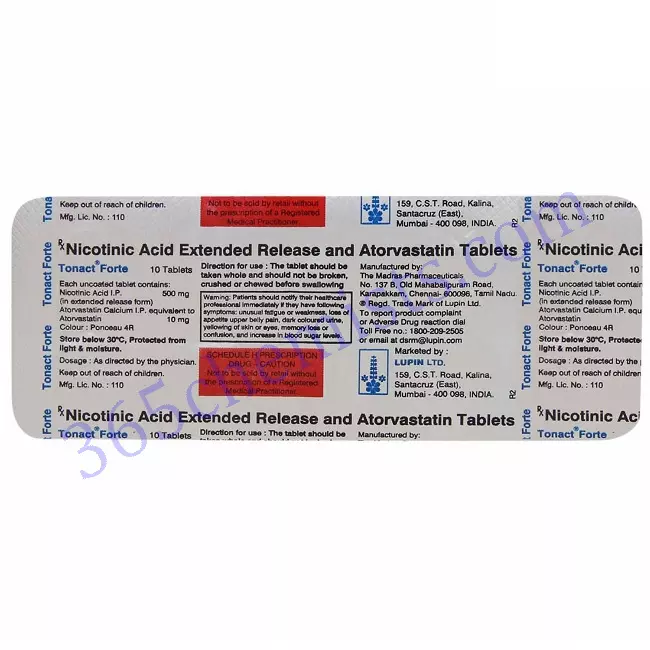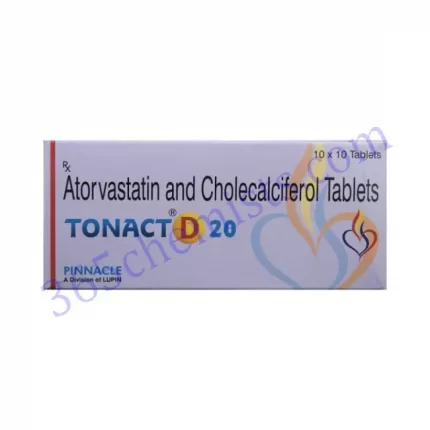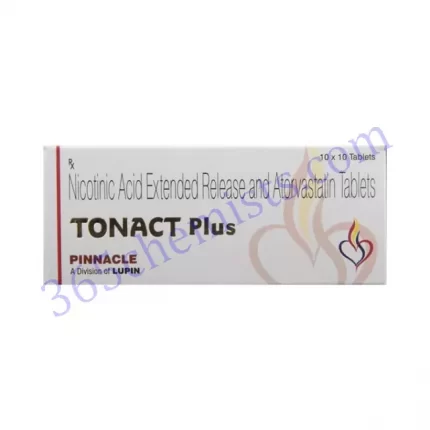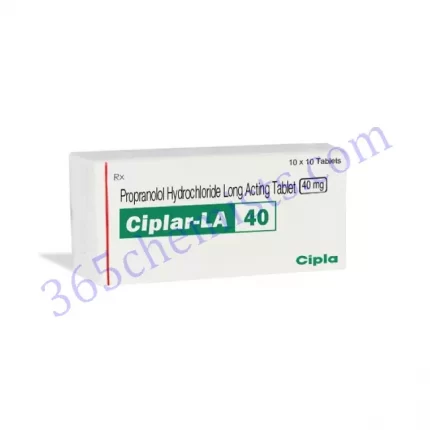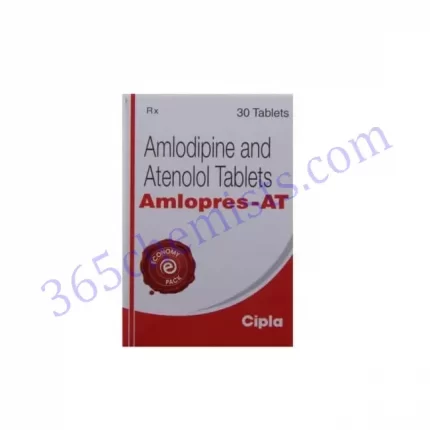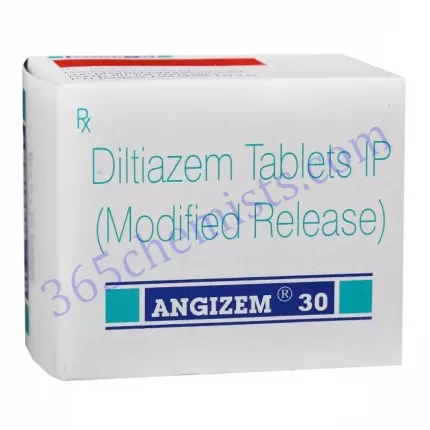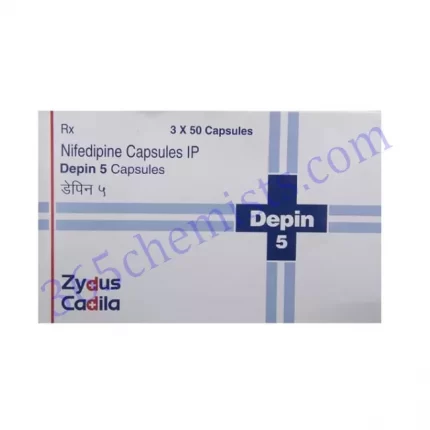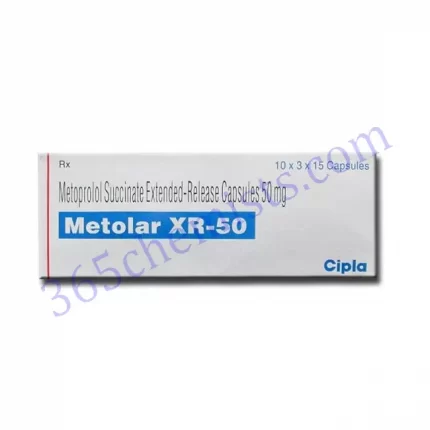Tonact Forte Tablet: A Comprehensive Description of Atorvastatin/Vitamin B3 Combination
Atorvastatin and Vitamin B3 (Niacin) are the two active components that are included in each Tonact Forte Tablet. This medication is a combination product. Individuals who require additional therapy to lower their cholesterol levels are typically given a prescription for this combination drug because it is effective in the management of high cholesterol levels. Atorvastatin is classified as a member of the group of medications known as statins, whereas vitamin B3 is a water-soluble vitamin that is essential to a number of different metabolic processes in the body. They have a synergistic effect that lowers LDL cholesterol levels and improves the overall lipid profile when they are used together.
Composition:
Atorvastatin 10 milligrammes and 500 milligrammes of vitamin B3 are both included in each Tonact Forte tablet. The tablet contains, in addition to the active ingredients, a number of other inactive components that are essential for the process by which the tablet is formulated and manufactured.
Mechanism of Action:
The action of atorvastatin is achieved through the inhibition of the enzyme HMG-CoA reductase, which plays a role in the production of cholesterol in the liver. It accomplishes this by lowering cholesterol production, which in turn helps reduce LDL cholesterol levels. There are multiple ways in which vitamin B3, also called niacin, can exert its effects. It helps increase levels of HDL cholesterol, also known as the “good” cholesterol, while simultaneously lowering levels of triglycerides. It does this by inhibiting the production of very low density lipoproteins (VLDL) in the liver, which is another way that it helps lower LDL cholesterol levels.
Indications:
Patients diagnosed with primary hypercholesterolemia or mixed dyslipidemia may benefit from treatment with Tonact Forte Tablet for the reduction of elevated levels of LDL cholesterol in their bodies. Patients who have not achieved optimal cholesterol control with statin therapy alone or who require additional cholesterol-lowering medications are the ones who are given this medication as a prescription. The combination is customised to meet the requirements of each individual patient, taking into account factors such as the results of the lipid profile, the cardiovascular risk, and the patient’s medical history.
Dosage and Administration:
It is possible for the recommended dosage of Tonact Forte Tablet to change depending on the lipid profile of the patient as well as their reaction to treatment. It is essential to take the tablet in the manner recommended by the medical professional and adhere to the dosage that has been prescribed. One tablet containing 10 milligrammes of atorvastatin and 500 milligrammes of vitamin B3 should be taken orally once per day by adults. This is the recommended starting dose. You can choose to take the tablet with food or on an empty stomach. It is possible for the healthcare provider to adjust the dosage based on the characteristics of the individual patient as well as the response to treatment.
Related Product
Tonact 5 Tablet
Tonact 10 Tablet
Tonact 20 Tablet
Tonact 40 Tablet
Tonact 80 Tablet
Tonact D 10 Tablet
Tonact D 20 Tablet
Tonact EZ Tablet
Tonact Forte Tablet
Tonact Plus Tablet
Tonact ASP 150 Capsule
Tonact ASP 75 Capsule
Tonact TG 10 Tablet
Tonact TG 20 Tablet
Contraindications and Precautions:
Patients who have a hypersensitivity to atorvastatin, vitamin B3, or any of the other components of the Tonact Forte Tablet should not take the medication because it is not safe for them. Patients who have active liver disease or persistent elevations in serum transaminases for no apparent reason should not take this medication. Patients who have a history of liver or kidney dysfunction, as well as patients who are taking concomitant medications that are known to interact with atorvastatin or vitamin B3, should exercise extreme caution when receiving treatment. In order to prevent potentially harmful side effects or drug interactions, the healthcare provider should be made aware of any preexisting medical conditions or medications that are currently being taken by the patient.
Adverse Effects:
Tonact Forte Tablet, like any other medication, carries with it the potential for side effects to manifest in some patients. Headaches, flushing, itching, gastrointestinal disturbances, and increased liver enzymes are some of the most frequently reported adverse effects of this drug. Myopathy, also known as muscle pain or weakness, and rhabdomyolysis, also known as severe muscle breakdown, are examples of the rare but possible serious adverse effects. It is imperative to provide prompt notification to the healthcare provider of any side effects that are unusual or severe.
Drug Interactions:
There is a possibility of an interaction between Tonact Forte Tablet and other medications, such as those that suppress the immune system, other lipid-lowering agents, and certain antibiotics. It is essential to keep the healthcare provider informed about any and all medications that are being taken, including over-the-counter medicines and dietary supplements made from plants, in order to prevent dangerous drug interactions. Should it become necessary, the healthcare provider has the ability to alter the dosage or select an alternative form of treatment.
Conclusion:
Atorvastatin and vitamin B3 are both components of the combination medication known as Tonact Forte Tablet, which is prescribed for the treatment and management of high cholesterol levels. It provides an effective treatment option for individuals who require additional therapy to lower their cholesterol by working synergistically to lower LDL cholesterol and improve lipid profile. Before beginning treatment with this medication, it is essential to confer with a qualified medical professional who can evaluate the specific requirements of the patient, as well as determine the correct dosage and treatment strategy. It is essential to perform routine monitoring of lipid profiles, liver function, and overall response to treatment in order to accurately assess the efficacy of the medication and effectively manage any potential adverse effects. Alterations to one’s lifestyle, such as adopting a heart-healthy diet, maintaining a regular exercise routine, and giving up smoking, should be combined with the use of medication in order to achieve optimal cholesterol control and a significant reduction in the risk of cardiovascular disease.

